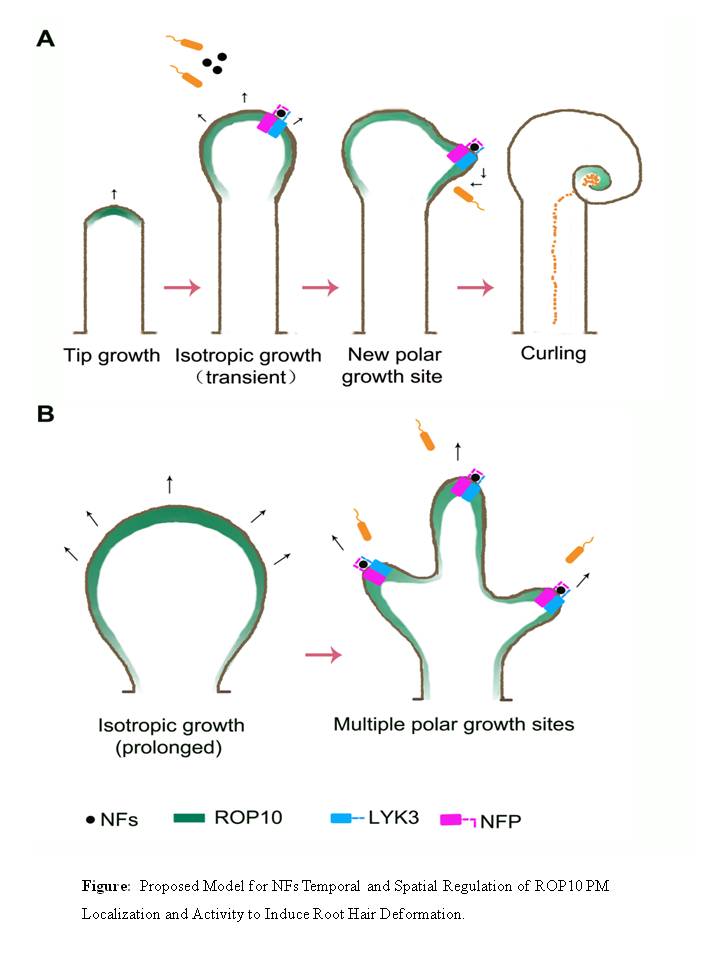A Small GTPase Plays a Big Role in Legume Symbioses
Legumes are able to establish an intricate symbiotic relationship with specific soil-dwelling rhizobia, leading to the formation of nitrogen-fixing root nodules which allow host plants to utilize atmospheric N2 and grow in nitrogen-limiting soil. Upon perceiving flavonoids exuded by the host plants, rhizobia produced signaling molecules-Nod Factors (NFs). In response to NFs, root hairs undergo root hair deformation, including tip swelling, branching and curling, ensuring that root hair cells can entrap rhizobia and initiate infection thread formation. However, the mechanisms underlying root hair deformation during symbiotic interaction are poorly understood.
Dr. WANG Yanzhang and her colleagues at Institute of Plant Physiology and Ecology, Shanghai Institutes for Biological Sciences, now revealed that ROP10, a type II small GTPase, is required for NF-induced root hair deformation in Medicago truncatula. ROP10 is localized at the plasma membrane of root hair tips to regulate root hair tip growth. Overexpression of ROP10 or a constitutively active form of ROP10 leads to depolarized growth of root hairs, whereas a dominant negative form of ROP10 inhibits root hair elongation. Interestingly, upon on NF treatment, ROP10 is ectopically localized at the PM of NF-induced outgrowths and curls around rhizobia. In agreement with this finding, ROP10 is found to interact with the kinase domain of the NF receptor NFP in a GTP-dependent manner and NF-induced expression of the early nodulin gene ENOD11 is enhanced by the overexpression of ROP10 or its constitutively active form. Overall, these data suggest that NFs spatiotemporally regulate ROP10 localization and activity at the plasma membrane of root hair tips and that interactions between ROP10 and NF receptors are required for root hair deformation and continuous curling during rhizobial infection.
This work entitled “The Small GTPase ROP10 of Medicago truncatula Is Required for Both Tip Growth of Root Hairs and Nod Factor-Induced Root Hair Deformation” was published online in The Plant Cell (Vol.27, No.3, pp:806-822, Mar.2015;doi: 10.1105/tpc.114.135210). It was funded by the National Basic Research Program of China (grant No. 2010CB126501) and the National Natural Science Foundation of China (grant No. 31071065 and 31270292).
